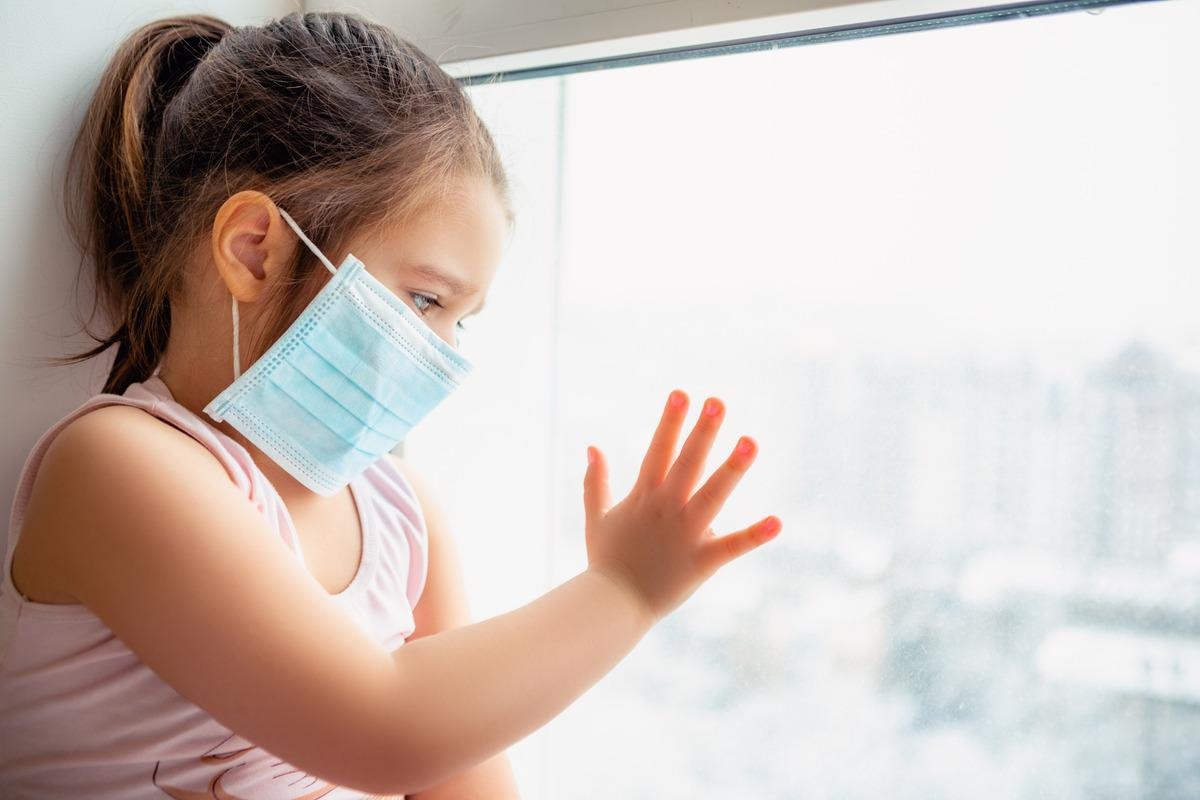In a recent study published in the Journal of Pediatrics, researchers evaluated neurologic complications in pediatric cases of coronavirus disease 2019 (COVID-19).
 Study: Neuro-inflammatory disease following SARS-CoV-2 infection in children. Image Credit: L Julia/Shutterstock
Study: Neuro-inflammatory disease following SARS-CoV-2 infection in children. Image Credit: L Julia/Shutterstock
COVID-19, caused by severe acute respiratory syndrome coronavirus-2 (SARS-CoV-2), results in asymptomatic infection and respiratory failure in adults. Since the early pandemic period, there have been reports of neurologic conditions, including delirium, non-specific headache, stroke, and dizziness.
Some case reports have observed rare events of central nervous system (CNS) inflammation like acute disseminated encephalomyelitis (ADEM), encephalitis, and optic neuritis. Moreover, some researchers reported antibodies against myelin-oligodendrocyte (MOG) in COVID-19 patients, including in children.
COVID-19 generally manifests as less severe disease in children compared to adults. For instance, around 10% and 3% of adult patients develop hypoxemic pneumonia and acute respiratory distress syndrome (ARDS), whereas pediatric COVID-19 cases experience respiratory symptoms less frequently.
Furthermore, the multisystem inflammatory syndrome in children (MIS-C) has now been described as a COVID-19-related complication, with some MIS-C cases developing the neurologic inflammatory disease. Nevertheless, data on neurologic complications in pediatric COVID-19 patients are limited.
About the study
In the present study, researchers reported a case series of 19 children with neurologic symptoms associated with COVID-19. They performed a retrospective chart review of pediatric cases referred to a Parisian hospital from January 1, 2020, to July 1, 2021. Eligible subjects for inclusion were those below 18 years and positive for SARS-CoV-2 with neurologic signs. Laboratory, clinical and radiologic records were screened to extract data.
SARS-CoV-2 reverse-transcription polymerase chain reaction (RT-PCR) tests were performed on nasopharyngeal swabs. Immunoglobulin G (IgG) against SARS-CoV-2 nucleoprotein (N) was detected using SARS-CoV-2 IgG II tests until February 2021. A ratio of 0.5 or above for serum samples was deemed positive. Beginning February 2021, IgG against spike (S) protein was quantified using the SARS-CoV-2 IgG II Quant antibody test, and positive results were those with 50 arbitrary units (AU)/ml or above.
Isoelectric focusing was carried out to ascertain oligoclonal bands (OCBs) of IgG in cerebrospinal fluid (CSF). A cell-based assay detected serum antibodies against aquaporin 4 (AQP4) and MOG by indirect immunofluorescence. All patients underwent brain and spinal magnetic resonance imaging (MRI).
Results
Twenty-one pediatric cases with a CNS inflammatory encephalopathy were referred to the Necker-Enfants maladies Hospital during the specified time. Two patients presented coinfection with systemic manifestations and succumbed to multiple vascular and infectious complications. In the present study, the remaining cases (19) were described who lacked any coinfections and had a COVID-19-related CNS inflammatory disease diagnosis.
The final cohort included 12 girls, and the median age of cases was 8.7 years. No child had any vaccine-related complications, history of severe disease, or neurologic abnormalities. None were vaccinated for SARS-CoV-2; six were asymptomatic for COVID-19, and the remainder had a fever, diarrhea, abdominal pain, asthenia, or headache.
MIS-C was observed in six patients with evidence of systemic inflammation, fever, and myocardial dysfunction symptoms manifesting 3.5 medians days after general symptom onset. The remaining 13 had neurologic complications, with symptoms appearing after three median days. Ten cases had cerebellar signs, nine with altered consciousness or impaired cognitive functions. All patients were previously exposed to SARS-CoV-2 and tested positive for IgG. Eight cases were PCR-positive for SARS-CoV-2 at (systemic/neurologic) symptom onset.
CSF was examined eight median days post-neurologic symptom onset. Eleven patients had pleocytosis, predominantly lymphocytes, and neutrophils. All patients were negative for other viruses (cytomegalovirus, varicella-zoster virus, enterovirus, etc.) in CSF as tested by PCR. Only one patient had elevated protein levels, and OCBs were detected in two (out of 10 tested) patients. Interferon (IFN)-alpha secretion was negative for all nine tested patients. Three patients out of nine tested had abnormal levels of cytokines.
MRIs of 14 patients were abnormal; one had optic neuritis, four showed ADEM with multifocal lesions in the brain, two had cerebellitis, and one each had isolated facial-, optic- and multineuritis. Five spinal MRIs were abnormal, with five cases of myelitis. Four children were positive for anti-AQP4 (a girl) and anti-MOG (two girls and one boy) antibodies.
Fourteen patients were treated with methylprednisolone, and two received no anti-inflammatory treatment; 16 were managed with oral corticosteroids; 11 were given intravenous immunoglobulins. Those with autoantibodies (anti-AQP4 or anti-MOG) received methylprednisolone. Although no relapse was observed, the autoantibodies were positive in three patients during the follow-up.
Conclusions
Although COVID-19 is predominantly a respiratory disease in adults, pediatric cases are often characterized by the manifestation of post-infection non-pulmonary inflammation or immune-mediated responses. The occurrence of rare conditions suggested that predisposing host factors might exist. More comprehensive studies are warranted in the future to explore the genetic variants in those susceptible to these complications during COVID-19.